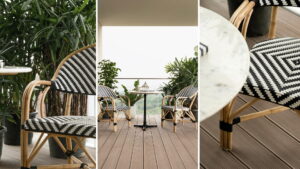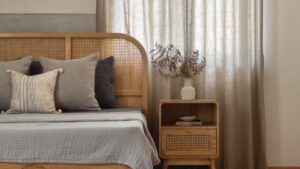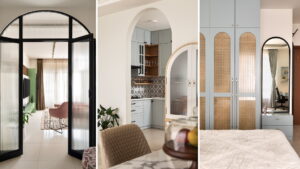In the world of interior design, achieving harmony and balance within spaces goes beyond aesthetics – it delves into the realm of energy flow and tranquillity. Enter Feng Shui, an ancient Chinese practice that has woven its principles into Modern Design Style philosophies. Let’s explore how incorporating Feng Shui principles can transform your living spaces into havens of balance and positivity.
Understanding Feng Shui
Feng Shui, which translates to “wind-water,” is rooted in the belief that the arrangement of spaces affects the flow of energy or qi. At its core, it seeks to create environments that support the well-being and harmony of its inhabitants. This concept is grounded in various principles that guide design choices and spatial arrangements.
Balancing the Five Elements
Central to Feng Shui is the concept of the five elements: wood, fire, earth, metal, and water. Each element is associated with specific qualities and colours. Incorporating these elements thoughtfully into interior design can evoke balance and vitality within a space. For instance, introducing wooden furniture or plants represents the wood element, fostering growth and vitality.
Optimizing Layouts for Energy Flow
The layout and arrangement of furniture play a pivotal role in Feng Shui. By considering the flow of energy, or qi, within a room, designers can create layouts that encourage a smooth and harmonious movement of energy. Avoiding clutter and ensuring that pathways are clear can facilitate a positive flow of qi throughout the space.
Harmonizing Colors and Textures
Colours and textures have a profound impact on the ambience of a room. In Feng Shui, specific colours are associated with different elements and energies. For instance, soothing blues and greens evoke tranquillity, while fiery reds or oranges can stimulate energy. Similarly, incorporating diverse textures, such as smooth surfaces or rough textiles, adds depth and balance to the space.
Embracing Natural Light and Air Quality
Maximizing natural light and ensuring good air circulation are fundamental aspects of Feng Shui. Well-lit spaces not only uplift the mood but also encourage the flow of positive energy. Incorporating air-purifying plants not only enhances aesthetics but also contributes to improved air quality, fostering a healthier environment.
Creating Zones for Purposeful Living
Feng Shui emphasizes the creation of distinct zones within a space, each dedicated to specific activities or purposes. This segmentation allows for a clearer definition of spaces, promoting functionality and intentionality in design. For instance, a designated relaxation corner with comfortable seating and soothing elements fosters a sense of calmness and rejuvenation.
Applying Bagua to Enhance Energy Flow
The Bagua, a Feng Shui energy map, divides spaces into nine zones, each representing different aspects of life, such as wealth, career, and relationships. By aligning specific colors, elements, and decor with these zones, designers can enhance the energy related to each aspect, promoting balance and vitality in those areas of life.
Integrating Feng Shui interior design goes beyond creating visually appealing spaces. It’s about crafting environments that nurture positive energy flow, support well-being, and promote harmony. By embracing the wisdom of Feng Shui, spaces can transcend mere aesthetics, becoming sanctuaries that resonate with balance, vitality, and tranquillity.
Whether you’re revamping your home or designing a new space, consider incorporating these timeless Feng Shui principles. Embrace the elements, harmonize colours, and optimize layouts to create spaces that not only look beautiful but also feel rejuvenating and balanced.



